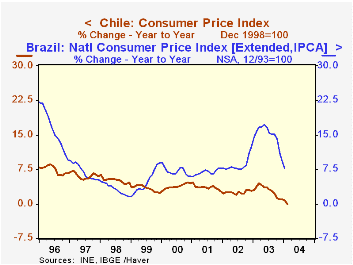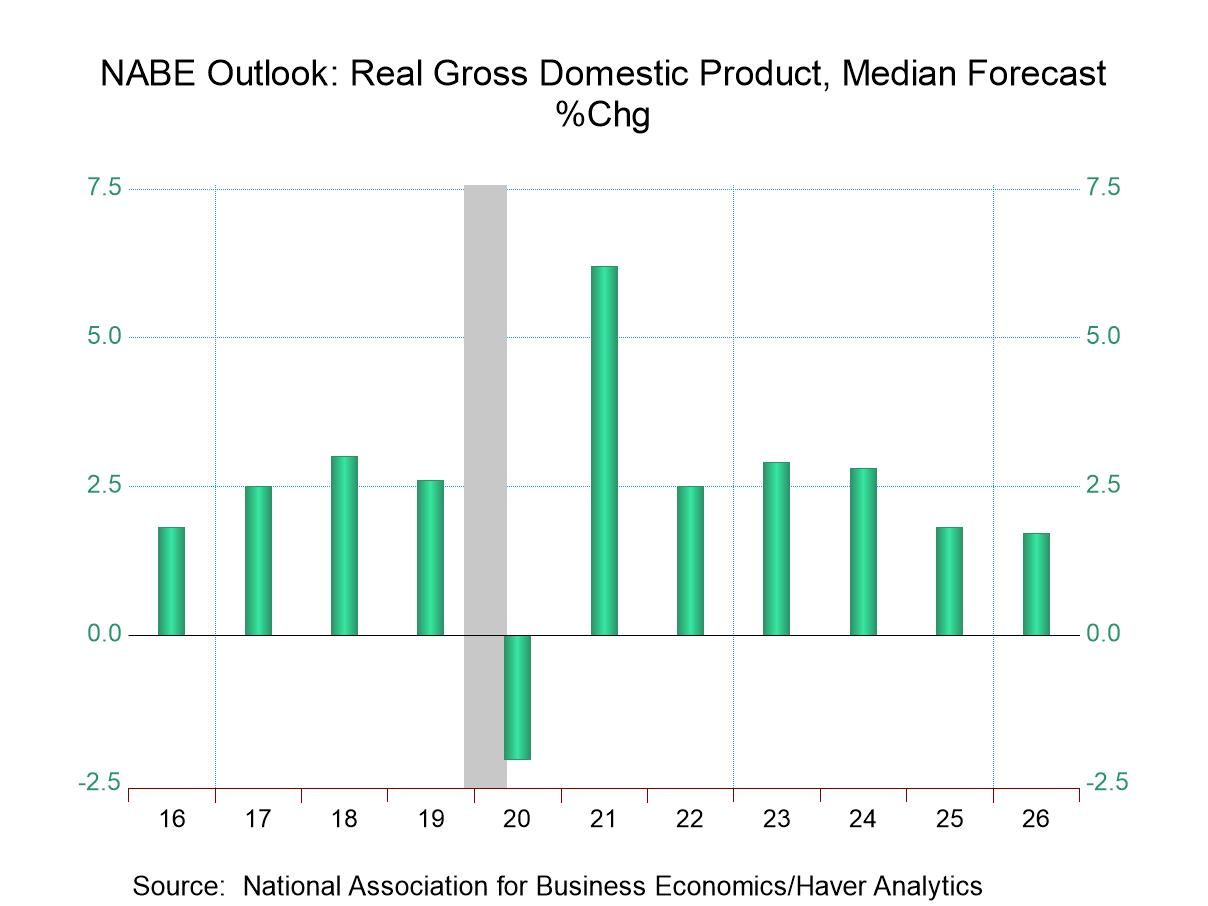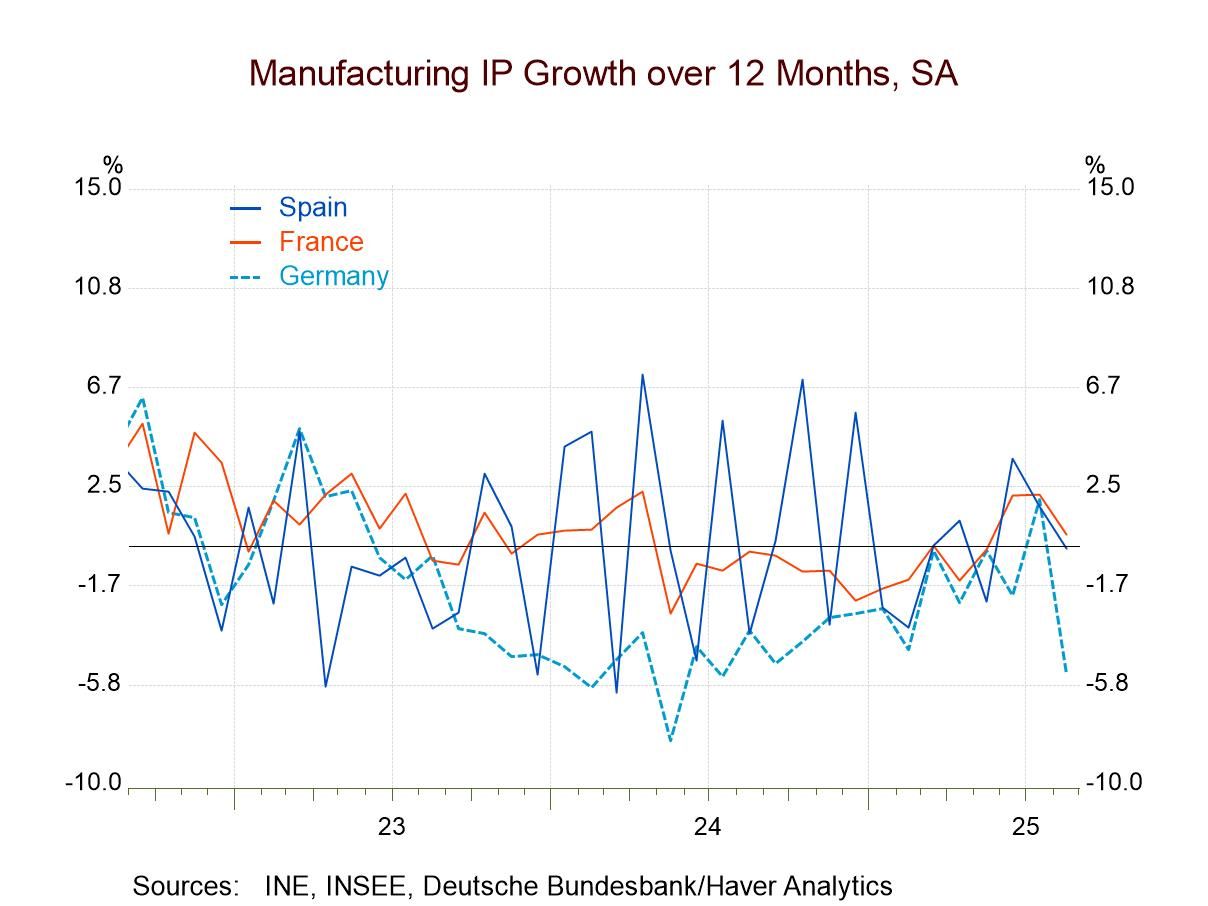 Global| Mar 04 2004
Global| Mar 04 2004Inflation Coming Under Control in Latin America
Summary
"Low inflation in Latin America" seems almost an oxymoron. Nonetheless, of three major economies in the region, inflation is low and, in one instance, almost non-existent. Chile, whose CPI was reported today for February, has in fact [...]

"Low inflation in Latin America" seems almost an oxymoron. Nonetheless, of three major economies in the region, inflation is low and, in one instance, almost non-existent. Chile, whose CPI was reported today for February, has in fact seen no inflation over the past 12 months, following a progressive slowing since the early 1990s.
Argentina is presently experiencing quite modest CPI inflation, just 2.3% over the 12 months to February (the latest figures were published yesterday, March 3). However, a major, widespread surge in prices occurred in 2002, coincident with the decoupling of the peso from the US dollar. Inflation that year was 41.0%.
Inflation is still moderately high in Brazil, with the 12-month rate at 7.7% in January. This compares favorably, however, with triple- and even quadruple-digit rates as recently as 1994.
We wondered if these various inflation patterns were related to overall growth. As noted in the table, Chile, whose CPI is the lowest and the steadiest of these three, also has the steadiest GDP growth, and indeed, the highest 10-year average growth rate, 4.4%. Argentina, with the most variable inflation over the last 10 years, has the lowest 10-year growth rate, a mere 0.6% annualized. Brazil, where inflation is not "low", but which has made fairly consistent progress bringing it down in recent years, is in the middle growth-wise, with a 10-year average of 2.4%. However, the most recent three years have seen quite tepid growth performance. Thus, the relationship of growth and inflation is not clear, although in this limited sample, it appears that a steady evolution of inflation trends -- as in Chile -- might help foster stronger GDP growth.
| Year/Year % Changes | Feb 2004 | Jan 2004 | 2003 | 2002 | 2001 | Average: 1995-2000 | Average: 1990-1995 |
|---|---|---|---|---|---|---|---|
| Chile | |||||||
| CPI | 0.0 | 0.8 | 1.1 | 2.8 | 2.6 | 4.8 | 12.1 |
| GDP | 3.0* | 3.2 | 2.0 | 4.0 | 9.2 | ||
| Brazil | |||||||
| CPI | 7.7 | 9.3 | 12.5 | 7.7 | 6.2 | 630.0 | |
| GDP | -0.1 | 1.9 | 1.3 | 2.4 | 3.0 | ||
| Argentina | |||||||
| CPI | 2.3 | 2.7 | 3.7 | 41.0 | -1.5 | -0.3 | 19.6 |
| GDP | 9.8* | -3.4 | -10.5 | 2.6 | -5.0 |
Carol Stone, CBE
AuthorMore in Author Profile »Carol Stone, CBE came to Haver Analytics in 2003 following more than 35 years as a financial market economist at major Wall Street financial institutions, most especially Merrill Lynch and Nomura Securities. She had broad experience in analysis and forecasting of flow-of-funds accounts, the federal budget and Federal Reserve operations. At Nomura Securities, among other duties, she developed various indicator forecasting tools and edited a daily global publication produced in London and New York for readers in Tokyo. At Haver Analytics, Carol was a member of the Research Department, aiding database managers with research and documentation efforts, as well as posting commentary on select economic reports. In addition, she conducted Ways-of-the-World, a blog on economic issues for an Episcopal-Church-affiliated website, The Geranium Farm. During her career, Carol served as an officer of the Money Marketeers and the Downtown Economists Club. She had a PhD from NYU's Stern School of Business. She lived in Brooklyn, New York, and had a weekend home on Long Island.





